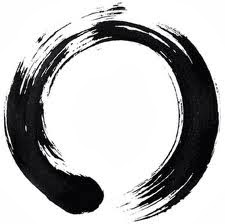Before starting to create my toile I needed to decide how
much fabric I would need. I came to a conclusion that I will need 1 m.80 for my pleated skirt. Because my skirt fabric will not be wide enough I will have to cut the fabric into three strips and sew together at the selveages.
Picture shown below...

-From my pattern pieces I created I had created I marked on the seam allowances (1.5) and used my pattern pieces as a guideline. I made sure I overlocked the sides of my fabric to stop it from fraying.
-I Put a blue mark where the material needed to be ironed. I then pined the material in place creating the pleats.
Creating a waistband
- I measured a 8cm waistband as I wanted my design to have quiet a big waistband almost like a feature to make it stand out.
- I got my 8cm waistband from my dress block, I then took a draft from that block and marked a dart.

The top section of the dress block I marked off with pattern paper in order to get the correct markings.
- I then removed the dart from the first draft and created a second draft.
- After that I then removed the dart from the first draft and
created a second draft making sure I had a 1.5 seam allowance to create my final pattern of a waistband.
- I then did the same thing but for the back block waistband.


- I began to sew the front and the back waistbands together at the side seams and fitted my waistband to the skirt. The darts shown above where I fitted my skirt to the mannequin and then added darts to the waistband.
Problem?
Whilst attaching the skirt to the manequin I cam across a few problems...
- -Is the length of the skirt going to be to long?
- - I must consider the price and the costings and not waste fabric so my outcome will be cost effective.
- Although I have manipulated the pattern for the waist I need to reduce it by 4cm at the front and 2cm at the back in my toile design I will also put darts in although for my final garment I will not.
- I then ensured I created new pattern pieces in order to fit my final design.
Pictures of the front and back of the toile
This is how the front straps will look once cut out of fabric.
Back of garment shown below... 

Front of garment...
- I firstly attached my paper pieces to the mannequin so I had a idea where and how I am going to attach them to my final garment.
I then cut out the straps for my final garment, I used interfacing and cut it with a 1.5 seam allowance because it reduced the bulk.
The picture above shows how I sewed around the edge of the interfacing to reduce the bulk, I felt by reducing the bulk by half it would give the straps a neater effect once they were turned inside out.
I then attached the straps to the skirt with a retaining row attaching them to the garment.
The picture below shows how I have attached the straps.

Once this was done you can now see the front and back view of my finished toile!
Front view... 

Back view...
.. I did not attach a zip in the back of the toile for the reason I will have to adjust this on fittings week depending on the models waist size.










































 Here are my two final dress designs for my theme celebrating curves, looking at my two designs I will be using quiet a variety of different fabrics. I have drawn the front and back of the garment and before I start being to make my dress I will need to problem solve for e.g.
Here are my two final dress designs for my theme celebrating curves, looking at my two designs I will be using quiet a variety of different fabrics. I have drawn the front and back of the garment and before I start being to make my dress I will need to problem solve for e.g.


 Cleopatra inspired me to create layers to my garment and looking through a range of the theatre costume's the colours used are very similar to my colour pallet.
Cleopatra inspired me to create layers to my garment and looking through a range of the theatre costume's the colours used are very similar to my colour pallet. 





